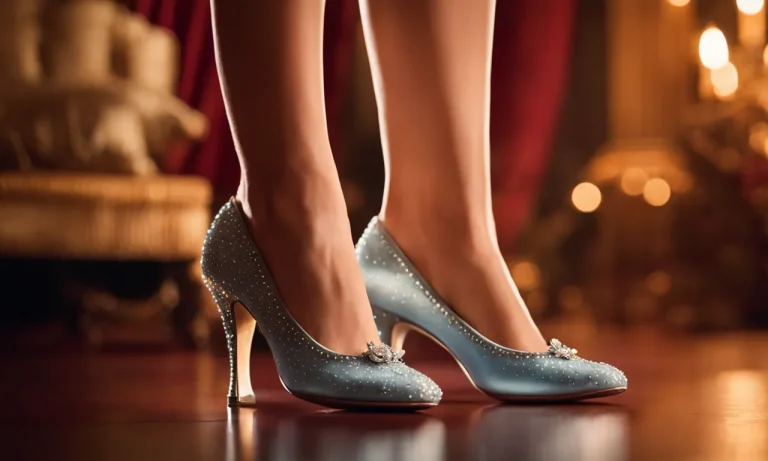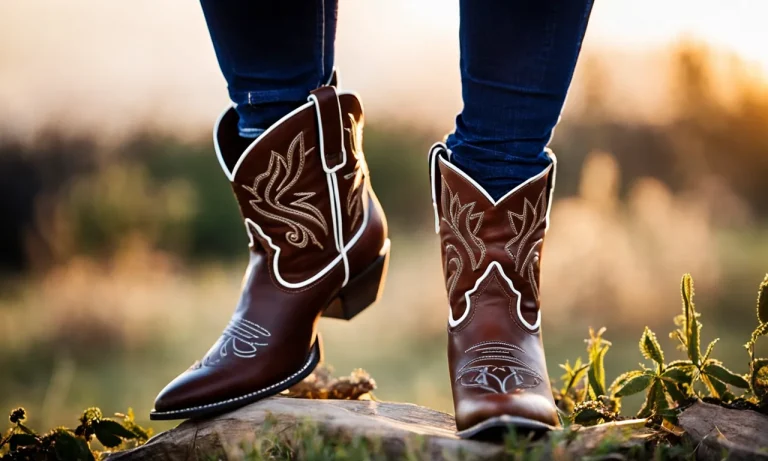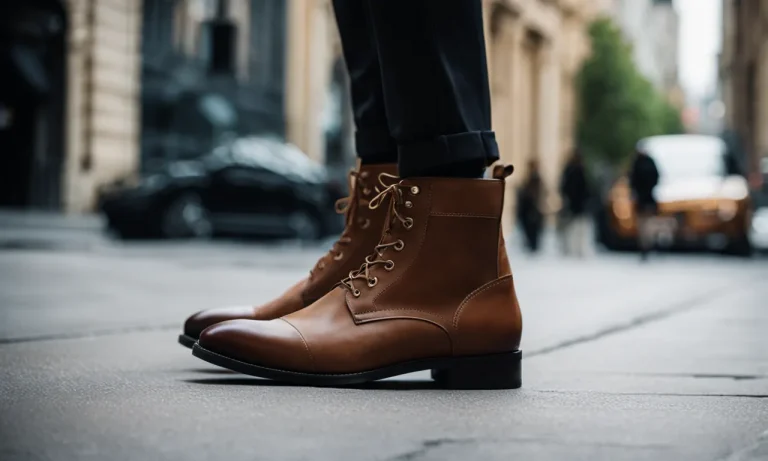If you’re an avid runner, having the right pair of running shoes is crucial for injury prevention and optimal performance. But with so many options on the market, how can you tell if you’re wearing the wrong shoes? Don’t worry – your feet will let you know.
Here’s what you need to watch out for to make sure your running shoes are the right fit.
Pain in Specific Areas
Heel Pain
One of the common symptoms of wearing the wrong running shoes is experiencing heel pain. This can be caused by various factors such as improper arch support, insufficient cushioning, or a shoe that is too tight or too loose.
Heel pain is often associated with conditions like plantar fasciitis or heel spurs, which can be exacerbated by wearing shoes that do not provide proper support and stability.
Achilles Tendonitis
Another area where pain can occur due to wearing the wrong running shoes is the Achilles tendon. The Achilles tendon is the largest tendon in the body and connects the calf muscles to the heel bone. Wearing shoes that do not provide adequate heel support or have a high heel drop can put excessive strain on the Achilles tendon, leading to inflammation and pain.
Metatarsal Pain
Wearing ill-fitting running shoes can also cause pain in the metatarsal area, which is the region at the base of the toes. Shoes that are too narrow, too tight, or have a lack of cushioning can result in increased pressure on the metatarsal bones, causing pain, numbness, or a burning sensation.
This can be particularly problematic for runners who have high arches or foot conditions like Morton’s neuroma.
Knee or Hip Pain
Wearing the wrong running shoes can also lead to pain in the knees or hips. Shoes that do not provide adequate shock absorption or stability can contribute to improper alignment and excessive impact on these joints.
This can result in conditions such as iliotibial band syndrome, runner’s knee, or hip bursitis. It is important to wear shoes that provide proper support and cushioning to minimize the risk of developing these painful conditions.
If you are experiencing pain in any of these specific areas while running, it is essential to assess whether your shoes are the culprit. Consider getting a professional gait analysis done or consulting with a podiatrist or sports medicine specialist to determine the right type of running shoes for your specific needs.
Remember, investing in the right pair of shoes is crucial for your comfort, performance, and injury prevention.
General Foot Discomfort
One of the most common symptoms of wearing the wrong running shoes is general foot discomfort. When your shoes don’t fit properly or aren’t designed for your specific foot type, you may experience a range of uncomfortable sensations.
Feet feel constricted
If your feet feel constricted in your running shoes, it could be a sign that they are too tight or narrow. This can lead to discomfort, pain, and even blisters. It’s important to have enough room for your feet to move and breathe while running.
Toes bump against front of shoe
Another indicator that you may be wearing the wrong running shoes is if your toes consistently bump against the front of the shoe. This can lead to discomfort and potentially cause issues such as black toenails or toe pain. Your toes should have enough space to wiggle comfortably within the shoe.
Heels slip up and down
If your heels slip up and down while running, it may be a sign that your shoes are too big or not providing adequate support. This can cause friction and lead to blisters or irritation. It’s important to have a secure fit around the heel to prevent any unnecessary movement.
Feet feel unstable or wobbly
When wearing the wrong running shoes, you may notice that your feet feel unstable or wobbly. This can be a result of improper cushioning or lack of arch support. It’s crucial to have shoes that provide stability and help to distribute your weight evenly while running.
Remember, wearing the wrong running shoes can not only lead to discomfort but also increase the risk of injury. Therefore, it’s important to invest in a pair of properly fitting and supportive running shoes.
If you’re unsure about what type of shoes are best for you, consider consulting with a professional shoe fitter or a podiatrist.
Excess Fatigue
Wearing the wrong running shoes can lead to excess fatigue, making your runs more challenging and less enjoyable. When your running shoes are not suitable for your feet and running style, they can cause unnecessary strain on your muscles and joints, leading to increased fatigue.
Here are some symptoms of excess fatigue caused by wearing the wrong running shoes:
Legs tire easily
If you find that your legs tire easily during your runs, it may be a sign that your running shoes are not providing the necessary support. The wrong shoes can lead to improper foot strike and alignment, putting extra stress on your legs and making them tire more quickly.
Proper cushioning and support are essential for reducing fatigue and preventing injury.
Feet feel more sore than usual
Another symptom of wearing the wrong running shoes is feeling more soreness in your feet than usual. Ill-fitting shoes can cause discomfort and rubbing, leading to blisters and sore spots. Additionally, inadequate arch support or incorrect shoe size can put excessive pressure on certain areas of your feet, causing pain and soreness.
Shins and calves tighten up
If you experience tightness in your shins and calves during or after your runs, it could be a result of wearing the wrong running shoes. Improper shoe support can contribute to overpronation or supination, which can strain the muscles in your lower legs.
This tightness can lead to discomfort and even shin splints if not addressed.
It is important to choose running shoes that are specifically designed for your foot type, running style, and any specific concerns you may have. Consulting with a knowledgeable running shoe specialist or podiatrist can help you find the right shoes for your needs.
Additionally, regularly replacing your running shoes as they wear out is essential for maintaining optimal support and preventing fatigue.
Blisters and Calluses
One of the most common symptoms of wearing the wrong running shoes is the development of blisters and calluses. Blisters typically appear on the heels or toes and are caused by friction between the shoe and the skin.
When the shoe doesn’t fit properly or rubs against the skin in certain areas, blisters can form. These painful fluid-filled sacs can make running uncomfortable and can even lead to infections if not properly treated.
Blisters on heels or toes
Wearing ill-fitting running shoes can cause blisters to form on the heels or toes. The constant rubbing and friction can create hot spots on these areas, eventually leading to blisters. Blisters on the heel can be especially problematic as they can make it difficult to walk or run without discomfort.
It is important to choose running shoes that fit properly and provide enough room for the toes to move freely. Additionally, wearing moisture-wicking socks can help reduce the chances of developing blisters.
Calluses on balls of feet
Another symptom of wearing the wrong running shoes is the development of calluses on the balls of the feet. Calluses are areas of thickened skin that form in response to repeated pressure or friction. When the running shoes don’t provide enough cushioning or support, the balls of the feet can bear the brunt of the impact, leading to the formation of calluses.
These calluses can be painful and may require treatment to alleviate discomfort.
Skin irritation from seams or stitching
In addition to blisters and calluses, wearing the wrong running shoes can also cause skin irritation from seams or stitching. Poorly designed or poorly constructed shoes may have rough seams or stitching that can rub against the skin and cause irritation.
This can lead to redness, chafing, and even open sores if left untreated. It is important to choose running shoes that have smooth interiors and minimal seams to minimize the risk of skin irritation.
Changes in Gait
One of the key symptoms of wearing the wrong running shoes is changes in gait. The way you walk or run, also known as your gait, can be affected if you are wearing shoes that are not suitable for your foot type or running style.
These changes in gait can have a significant impact on your overall running performance and may even lead to injuries.
Overpronation or underpronation
One common change in gait that can occur when wearing the wrong running shoes is overpronation or underpronation. Overpronation refers to the excessive inward rolling of the foot during the gait cycle, while underpronation, also known as supination, refers to the insufficient inward rolling of the foot.
Both of these conditions can put additional stress on certain parts of the foot and lead to discomfort or pain.
It is important to wear running shoes that provide adequate support and stability to correct pronation issues. Shoes with features such as arch support, motion control, or cushioning can help align the foot properly and prevent excessive pronation or supination.
Decreased stride length
Another symptom of wearing the wrong running shoes is a decreased stride length. Stride length refers to the distance between each step you take while running. When wearing shoes that are not suitable for your feet, you may unconsciously alter your stride length to compensate for discomfort or lack of support.
This can result in a shorter stride length, which may affect your running efficiency and speed. A shorter stride length can also put additional strain on certain muscles and joints, potentially leading to injuries such as shin splints or knee pain.
Slower pace than usual
If you notice that your pace has significantly slowed down compared to your usual running speed, it could be a sign that you are wearing the wrong running shoes. Ill-fitting or unsupportive shoes can hinder your natural running stride and make it more challenging to maintain your usual pace.
When your feet are not properly supported, your muscles have to work harder to compensate for the lack of cushioning or stability. This can result in fatigue and a slower pace. It is important to choose running shoes that provide the right amount of cushioning and support for your feet to maintain your optimal pace.
Remember, wearing the right running shoes is crucial for your overall comfort, performance, and injury prevention. If you experience any changes in gait, decreased stride length, or a slower pace than usual, it may be time to evaluate your running shoes and consider getting fitted for a new pair.
Conclusion
Wearing the wrong running shoes can really put your feet through misery. Pay attention to any pains, discomfort, or changes once you lace up. Your body is telling you that it’s time to get a better fitting pair. Visit a specialty running store and keep trying shoes until you find the perfect match.
With the right amount of cushioning and support, you’ll be running happy in no time.






